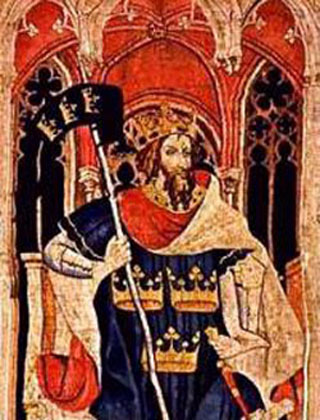
King Arthur from the Christian Heroes Tapestry, c. 1385. (Image courtesy of the Arthurian Literature & Art Web site.)
Instructor(s)
Prof. James Cain
MIT Course Number
21L.707
As Taught In
Spring 2005
Level
Undergraduate
Course Description
Course Highlights
This course features extensive study materials and links to numerous related Web sites.
Course Description
The course examines the earliest emergence of stories about King Arthur and the Knights of the Round Table in the context of the first wave of British Imperialism and the expanded powers of the Catholic Church during the twelfth and thirteenth centuries. The morphology of Arthurian romance will be set off against original historical documents and chronicle sources for the English conquests in Brittany, Wales, Scotland, and Ireland to understand the ways in which these new attitudes towards Empire were being mythologized. Authors will include Bede, Geoffrey of Monmouth, Chrétien de Troyes, Marie de France, Gerald of Wales, together with some lesser known works like the Perilous Graveyard, the Knight with the Sword, and Perlesvaus, or the High History of the Holy Graal. Special attention will be paid to how the narrative material of the story gets transformed according to the particular religious and political agendas of each new author.


